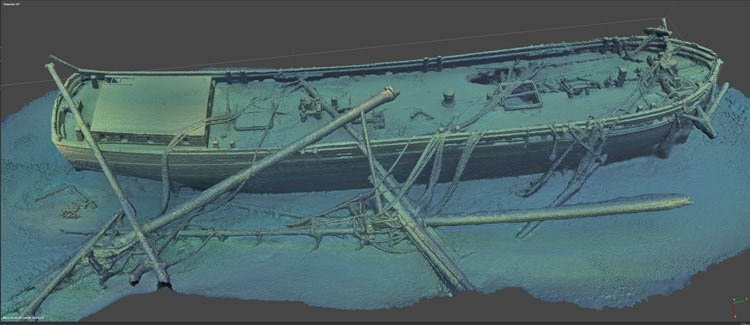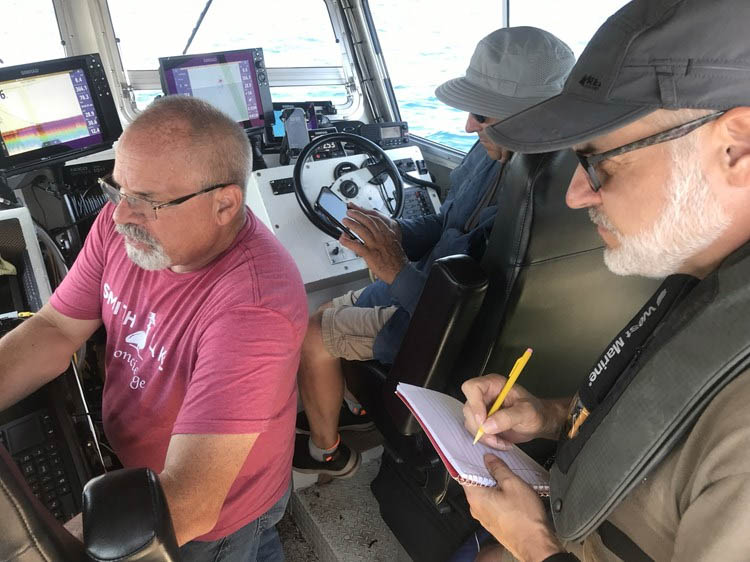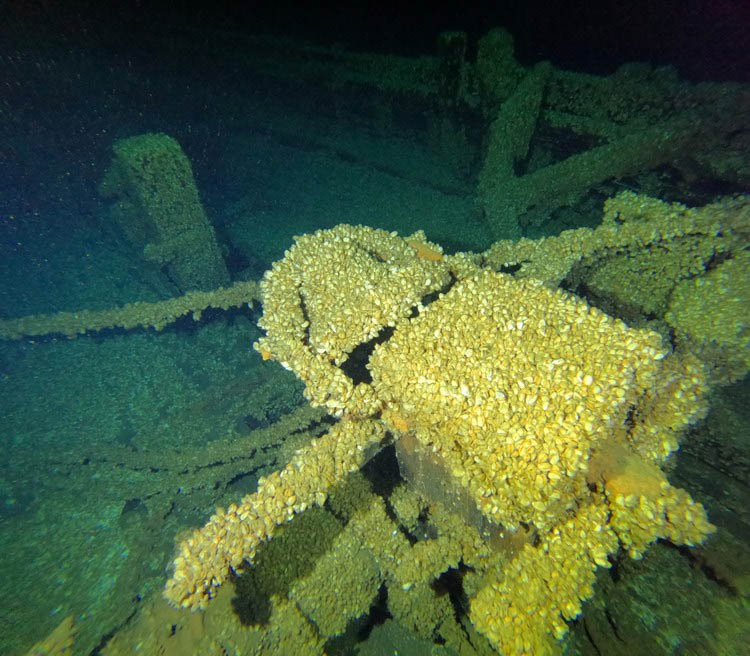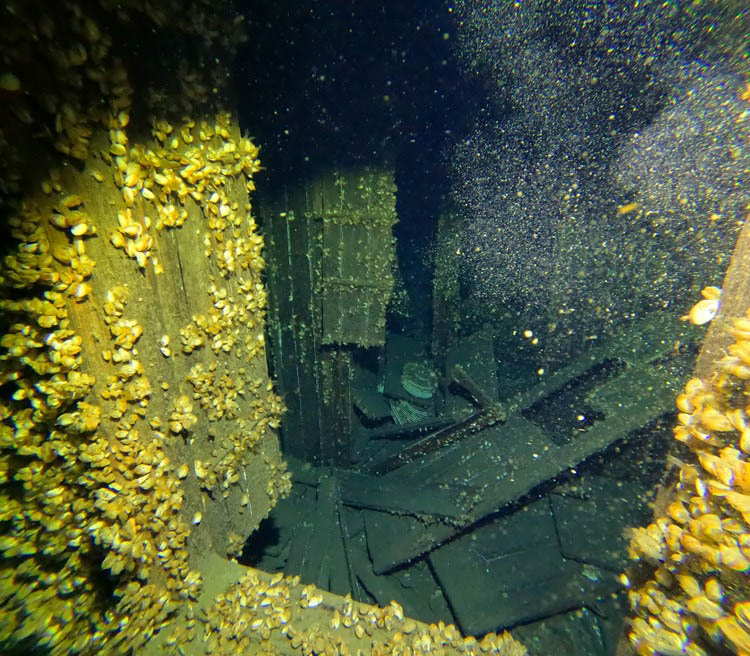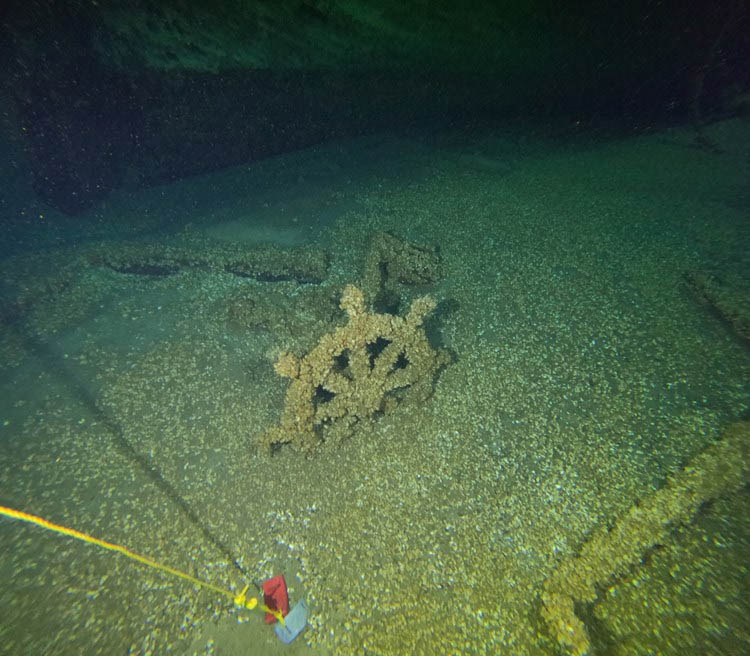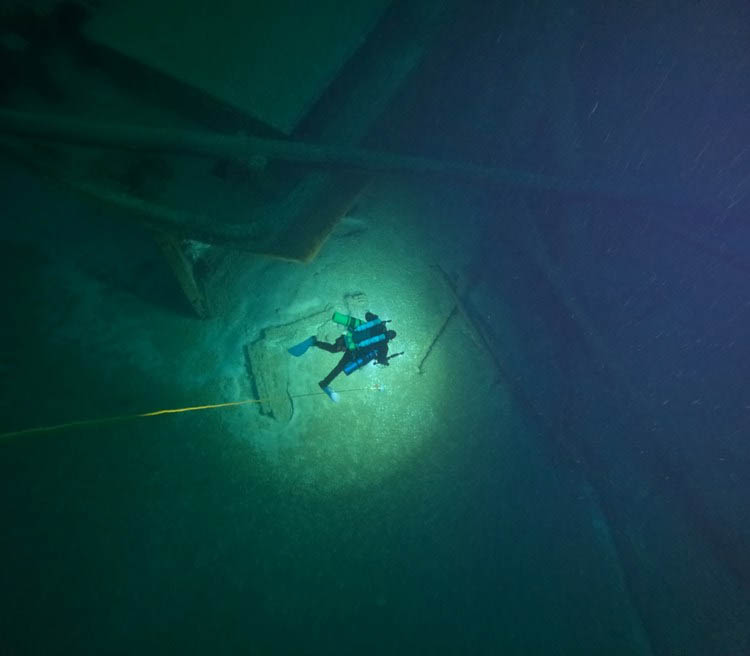Discovery of the Historic Great Lakes Schooner Trinidad
Follow up from The Scuba News Canada
On July 15th 2023, Wisconsin Maritime Historians Brendon Baillod and Bob Jaeck located the intact remains of the 156 year old schooner Trinidad in nearly 300 feet of water off Algoma, Wisconsin as the result of a deliberate search. The pair had been searching for the lost ship for the past two years with side scanning sonar.
The Trinidad had piqued Baillod’s interest nearly twenty years earlier while constructing a database of all known vessels lost in Wisconsin waters. The historic schooner “ticked all the boxes” as a candidate for discovery. Her crew gave a good description of where she sank, and she went down fairly slowly in deep water so she was likely very intact. She was also fairly near to a port city for convenient access and her loss was not well-known, even to the local community. Few people if any had ever searched for her.
Baillod collected dozens of historical news articles from the 1800s about the Trinidad’s build, launch, career and loss as well as locating her original customs house enrollment documents at the National Archives. Baillod studied the shipping lanes shown on historical nautical charts of the area and compared them with accounts from the Trinidad’s surviving crew to construct a search grid. He also located a previously unknown historical image of the vessel dating from 1873.
The Trinidad had been built in 1867 at Grand Island, New York just below Niagara Falls by William Keefe, an Oswego, New York shipbuilder. She was built for Oswego forwarding merchants John Keller and Aaron B. Merriam, specifically for the grain trade with Milwaukee and Chicago. She was 140 ft. long with two masts and had unusually large and well-appointed accommodations for her day. Schooners of her build were known a “canallers” because they were designed to be able to pass through the Welland Canal connecting Lakes Erie and Ontario.
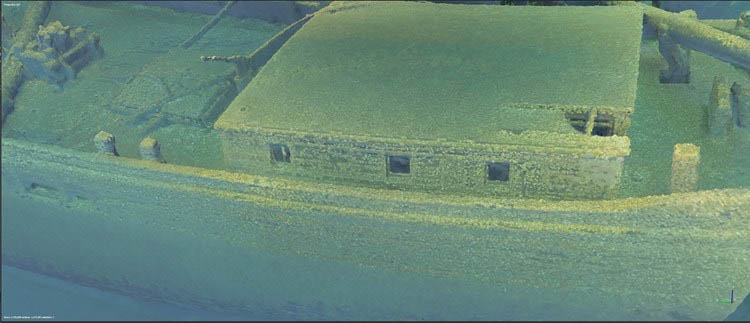
Zach Whitrock, Tamara Thomsen, State Historical Society of Wisconsin
The Trinidad’s main purpose was to carry coal or iron from Oswego, New York, then the eastern terminus of the Lakes, to Chicago and Milwaukee on the western Lakes. She would return with “prairie gold,” Wisconsin wheat, which would then be shipped down the Erie or Oswego Canal to the big cities of the east coast. The grain trade was extremely lucrative, and the Trinidad made a fortune for her owners, making hundreds of trips during her career.
Unfortunately, Trinidad’s owners didn’t invest much in the vessel’s upkeep and her career was relatively short for her era. Insurance records show that the vessel was worth $22,000 in 1867, but by 1878, her value had dropped by half. Her hull had started to leak and her captain was nearly killed by a block that fell from her decayed rigging. By 1879, she was no longer fit to carry precious grain cargoes and her owners decided to sell her.
The beginning of the end came in May of 1880, when the Trinidad was contracted to take a coal cargo up to the mines on Silver Islet in Lake Superior. It was an unfamiliar run for the aged vessel and she struck a reef upon approached the pier, tearing out ten feet of her bottom. She was salvaged and taken to the lower Lakes where she was hastily repaired and put back in service. Her owners then sent her with a final cargo of coal bound for Milwaukee in November of 1880, but her Captain, John Higgins, realizing that she was in poor repair, decided to lay her up for the winter at Port Huron, only half-way through her trip.
The next Spring, Higgins and 8 crew set out from Port Huron in heavy spring ice. Passing through the Straits of Mackinac on May 5th, the schooner reported thick ice and needed the assistance of a tug boat to break through. By May 10th, the Trinidad had made it to through the Sturgeon Bay Ship Canal and headed down the shore of Lake Michigan toward Milwaukee in moderate waves.
The vessel had been leaking slowly for a few years so little concern was felt when the mate informed the captain of rising water in the hold. The crew were set to the pumps, but the water continued to rise. The Trinidad had been fitted with extra pumps, so Captain Higgins maintained his course. Then, at 4:45AM on Wednesday, May 11th, the vessel suddenly lurched forward and began to sink rapidly. Captain Higgins and the crew had no time to gather their personal effects and immediately launched their small yawl-boat from the stern.
The vessel settled so fast that the ship’s mascot, a large Newfoundland dog asleep by the cabin stove, was unable to escape and went down with the vessel. Most of the men didn’t have their coats or rain gear and were quickly chilled. Captain Higgins ordered the crew to pull for the lights of Ahnapee, (present-day Algoma, Wisconsin) nearly ten miles distant. The men battled the waves for nearly 8 hours, making shore at about 2PM. The citizens of Ahnapee revived the frozen crew and gave them food and dry clothes before the crew caught the schooner J.B. Merrill which took them to Chicago.
There, Captain Higgins told his story to the marine reporters. Loathe to blame the owners, Higgins speculated that the schooner’s hull may have been cut by ice in the Straits of Mackinac. However, a review of the vessel’s career suggests that she was little more than a floating coffin by the time of her final voyage. Most vessels of the Trinidad’s era lasted twice as long as she did, but they also received regular recaulking and replacement of decayed or rotten wood and rigging. The insurance records suggest that Trinidad received little of the normal maintenance and was essentially sailed into the bottom of the Lake.
With this story in hand, Baillod and Jaeck set to finding the resting place of the Trinidad. The pair of experienced searchers had constructed a custom built towfish that allowed them to deploy a low frequency fish-finder sonar well below the surface instead of mounting it on the boat. This enabled them to create a three-dimensional map of the bottom nearly 1/3 of a mile wide with each pass, giving them the ability to map a large area of lake bottom in a relatively short time.
When Baillod and Jaeck first imaged the wreck, it appeared as little more than an indistinct smudge on their screen and the pair almost missed it. When they turned back for a second pass at slower speed and higher resolution, they could clearly see that they had discovered a shipwreck. The wreck was almost exactly where the Trinidad’s captain had reported her loss in 1881, but Baillod and Jaeck, who are active members of the Wisconsin Underwater Archeology Association, knew better than to proclaim their discovery at once.
Finding a previously unknown historic site is a substantial responsibility. Nearly all abandoned shipwrecks in Wisconsin waters are managed by the State as archeological sites and are protected from salvage. In the past however, wrecks were often pillaged for their artifacts or damaged by dive boats hooking anchors into their fragile remains. Baillod and Jaeck consequently reached out to the State Historical Society of Wisconsin’s Maritime Archeology program and reported their find so it could be documented prior to any impact or disturbance.
Tamara Thomsen, Wisconsin’s State Underwater Archeologist, arranged for the site to be surveyed by Crossmon Consulting using a commercial Remote Operated Vehicle (ROV) with a forward-looking sonar. This enabled the vessel’s hull to be measured with extreme accuracy. The dimensions of the hull were then compared to the historical dimensions given on the vessel’s original customs house enrollment documents and her identity was confirmed.
The vessel was indeed remarkably intact, with her deck house still in place, containing the crew’s possessions, dishes, anchors, bell and many other artifacts from the day of her loss in May of 1881. Thomsen returned with diver Zach Whitrock to photographically document the artifacts on the wreck and to construct a 3D photogrammetry model of the wreck. 3,600 high resolution images were taken by Whitrock during a 3 hour and 20 minute technical dive to the wreck. The images were then processed into a three-dimensional model that is fully rotational and can be used to give the public the experience of physically walking on the ship’s deck using a virtual reality headset.
Future plans for the Trinidad include nominating her remains to the National Register of Historic Places. Baillod will work with the State Historical Society to prepare the nomination, which will bring greater visibility to the site as an important part of the community history of Algoma and the surrounding area. Once the site is on the National Register and has been thoroughly documented, her specific location will be made public so technical divers can visit her without impacting the fragile wooden hull or the historical artifacts.
The fully rotational 3D model can be accessed at: https://sketchfab.com/3d-models/schooner-trinidad-1867-1881-3d14b04a97194eecbdc34fd1fd2da5be
Thanks to Brendon Baillod.
Follow Brendon’s dive adventures on Facebook



